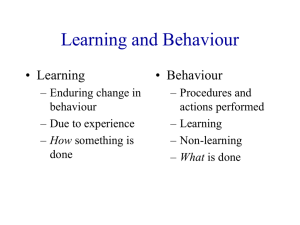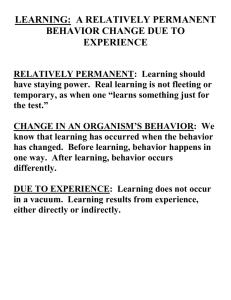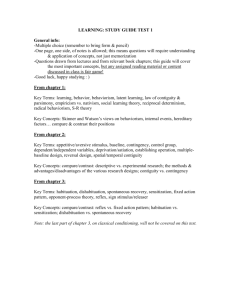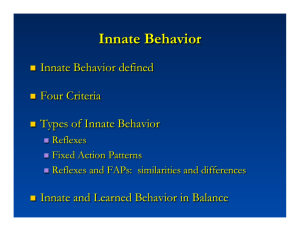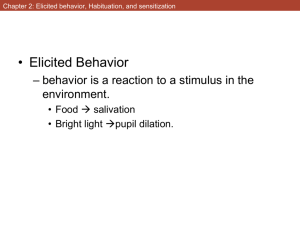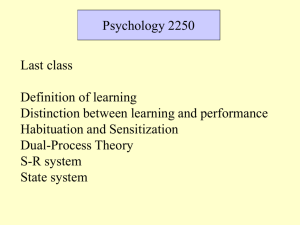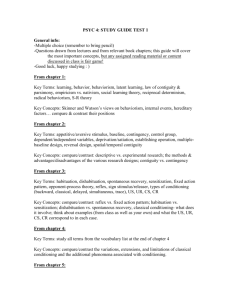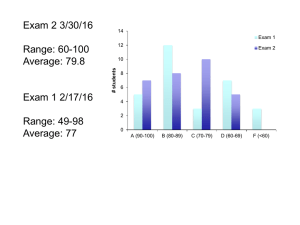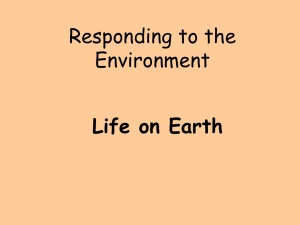KleinCh3
advertisement
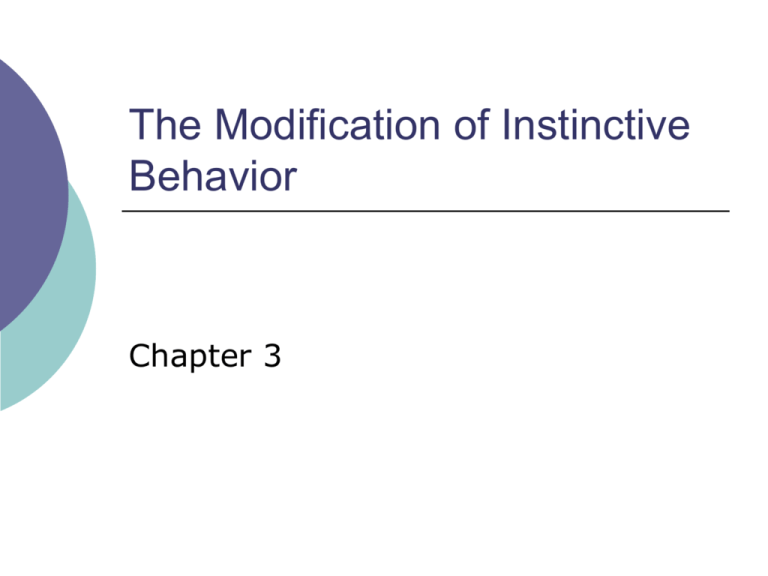
The Modification of Instinctive Behavior Chapter 3 Instinctive Systems Lorenz & Tinbergen – evolution occurs when a species incorporates environmental knowledge into its genetic structure. Greylag goose and egg-rolling. Learning can sometimes modify instinctive behavior – even though the fixed action patterns are innate. Energy Model Action-specific energy builds up but is blocked (inhibited). The energy motivates appetitive (approach) behavior. Presence of a sign stimulus releases the energy by stimulating an innate releasing mechanism. The behavior occurs as a fixed action pattern (or chain of actions). Releasing Signs Releasing signs can be complex: Grayling butterfly signs include darkness of female, distance from male, and pattern of movement. Intensity of the sign influences the behavior but so does the amount of accumulated energy (time since the last response). Hierarchical System Specific behaviors are controlled by a central instinctive system. Energy can accumulate at each level in the system. Hormones generate energy. Release of energy at higher levels flows to lower levels. The sign stimulus determines which behavior will occur. Conflicting Motives If two incompatible signs appear at the same time, energy flows to a third instinct system. This third behavior is called displacement. Conditioning Affects Behavior Conditioning experiences can change sensitivity to releasing signs. Only the consummatory response (eating, mating) at the end of a chain cannot be changed. Conditioning fine tunes the response to the environment and enhances survival. Lorenz Energy Model Criticisms of the Energy Model Best viewed as a metaphor. The brain does not literally accumulate energy in any centers and nothing flows. Willows & Hoyle – alternating contractions in sea slug allow it to escape from a starfish. Brain areas producing this response do not correspond to energy model. Acquired Changes in Response Habituation – response to a repeated stimulus decreases with experience. Sensitization – response to a repeated stimulus increases with experience. Examples: Ingestional neophobia, fear of new food Startle response Experimental Evidence Rats drink little saccharin water at first but increase over time. Loud tones (110 db) produce different responses depending on the background noise (60 vs 80 db). Habituation occurred at 60 db Sensitization occurred at 80 db A loud background is arousing, leading to greater reactivity, not less. Conditions Producing Change More intense (stronger) stimuli produce stronger sensitization, less likely to produce habituation. Greater sensitization and habituation occur when the stimulus is repeated frequently. Changes in the stimulus prevent habituation. Turkeys habituate but respond again if the shape changes. Conditions (Cont.) Sensitization can occur to many kinds of stimuli but habituation occurs only with innate responses. Habituation and sensitization are transient (go away after seconds or minutes between stimuli). Except long-term habituation. Dishabituation – response returns when a sensitizing stimulus occurs. Dual Process Theory Groves & Thompson suggest that sensitization originates in the central nervous system. Drugs that stimulate the CNS increase readiness to respond. Garcia suggests that the ability to modify innate reactions has considerable adaptiveness. Evolutionary Theory Eisenstein et al. suggest that this is a fine-tuning of sensory stimuli to recognize important stimuli. Habituation & sensitization are nonassociative forms of learning. Their function is to modify sensory thresholds to adjust to environment. High responders & low responders adjust in different ways to same stimulus. Cellular Modification Theory Aplysia – California sea slug Learning can permanently alter the functioning of neural systems. The change takes place at the synapse of the neurons. Stimulation by an external stimulus produces the change. Dishabituation Habituation disappears when the environmental stimulus changes. In the aplysia, the neural status may return to the previous condition. An alternative view is that sensitization occurs to modify the responding. The mechanism remains unclear. Opponent-Process Theory An explanation for addictions. All experiences produce an affective reaction (pleasant or unpleasant) – called the A state. This reaction gives rise to its opposite – called the B state. B state is less intense and lasts longer. Over time, the A state diminishes and the B state increases. Opponent Process Model The Addiction Process Tolerance – diminished A state. Withdrawal – increased B state. Addictive behavior is a coping response to the change in B state. People try to enhance A state to offset the unpleasantness of the B state. Without withdrawal symptoms there is no addictive behavior. Time prevents B state strengthening. What Sustains Addiction? The B state is a non-specific aversive feeling. Anything similarly aversive will motivate the addictive behavior, even if it has no relation to the substance. Daily life stress produces a B state that results in behavior to create an A state. Parachute jumpers – create a B state in order to feel the A state.
